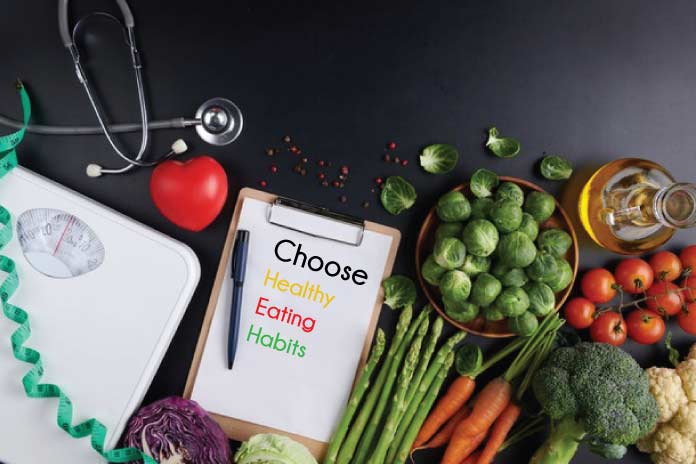
Living Healthy emphasizes the power and benefits of healthy food. The intergrative functional approach emphasizes high-quality food and nutrients that promote health. It considers the whole person. Participants are assessed for their health and given guidance to help them create and implement plans to improve it. You can also download the free booklet in Spanish or English. The book also contains tips and recipes that will help to live a healthy life. The Mayo Clinic website has more information for interested individuals.
Living Healthy is evidence-based. It focuses on system dysfunctions that lead to chronic conditions. Integrative functional nutrition (IFN) is also included to provide personalized care. Different people have different nutritional needs. Individuals' immune systems and gut flora determine which nutrients and foods are best for them. With this program, you will become an expert on your health and feel more confident and empowered.
Living Healthy Florida is a cooperative effort that provides consistent information about Florida's health. One tool is the Roadmap to Living Healthy. This tool draws on data to determine what nutritional needs are in communities. In addition to reducing obesity, improving diet quality affects a child's learning capabilities, social skills, and the cost of health care. The program can help you increase your access to healthy food and encourage healthy behaviour in your home. It's a comprehensive program that will benefit your whole family, friends, and your overall health.

Remember that solid fats can be bad for your heart, waistline, and stomach. Recommend whole grains over refined grain. Healthy dairy products can also be low-fat and nonfat. You can eat beans, eggs or vegetables as well as fruits and vegetables. And when ordering pizza, a thin whole-grain crust is better for you than meat. You can choose to have a slice of veggie pie with reduced-fat cheese or fat-free cheese if you aren't sure whether you want cheese-filled pizza.
Reduce your portions if you want to be healthy. A lot of restaurants provide enough food for two people. You can choose to split your entree or order half. Alternatively, eat only one or two servings of each dish. A quarter cup of spinach is more nutritious than a quarter cup of chicken. However, an entire plate of fried chicken can be healthier for only a half-cup. Choose fruits and veggies high in fiber to feel satisfied and eat less.
FAQ
What Is The Best Way To Lose Weight?
It is not easy to lose weight. Many people give up because they don’t know what else to do.
To lose that extra weight, however, there are simple steps you could take.
First, ensure you eat fewer calories that you burn. If you eat more calories that you burn, you'll gain weight.
The second is to get regular exercise in order burn those calories. You can choose from different types of exercises, including jogging, walking, cycling, dancing, etc.
Third, you must stop smoking cigarettes and drinking alcohol. These habits can cause you to consume more calories that you would otherwise.
Fourth, reduce your intake of fatty and processed foods. They can be replaced by healthier options, such as fruits and vegetables, lean meats or whole grains, legumes, seeds, beans, and nuts.
Fifth, change your lifestyle. It is possible to wake up at 5 AM to go to work, or to be more active before you get to work.
Sixth, you must be disciplined and follow your diet plan.
To burn extra calories, you can also join a gym or take an aerobics class.
By following these simple tips, you will soon begin to notice results.
Do I need to exercise every day?
No! No! That means walking fast enough to be slightly out of breath or biking hard enough to sweat.
Are you a cardio-exercise fan?
Cardiovascular exercise offers many benefits. It improves blood circulation, strengthens heart muscle, gives you energy, and can even help you lose weight.
Cardiovascular exercise includes running, biking, hiking, swimming, tennis, basketball, soccer, volleyball, football, etc.
Cardio exercises should be avoided at high intensity levels. Doing this could lead to injury.
Only do the cardio exercise when you are feeling good.
Never push yourself past your limits. Otherwise, you could end up injuring yourself.
Warm up is the best way to start cardiovascular exercise. You can then gradually increase your intensity.
Always listen to your body. If you feel pain when doing cardiovascular exercise, you should immediately stop.
After a cardio workout, it is a good idea to take a break. This will allow your muscles to rest.
Cardiovascular exercise is an important part of losing weight.
This is the best way to lose weight and belly fat.
Statistics
- According to the American Heart Association, blood pressure should be checked at least once every two years, beginning at age 20. (my.clevelandclinic.org)
- Cardmembers earn 5% Back at Amazon.com with a Prime Credit Card. (amazon.com)
- 10 pounds in a month is likely during a lean bulking phase, especially for beginners. (muscleandstrength.com)
- The PRS enabled risk stratification for overall prostate cancer and lethal disease with a four-fold difference between men in the highest and lowest quartiles (HR, 4.32; 95% confidence interval [CI], 3.16-5.89). (pubmed.ncbi.nlm.nih.gov)
- According to the American Academy of Dermatology (AAD), men over 50 are at a heightened risk of developing it. (healthline.com)
External Links
How To
How can I burn fat while exercising?
Exercise can help you burn calories and increase your metabolism.
At moderate intensity, you will lose weight easily.
These are the top tips for burning fat while you exercise.
-
Cardio exercises like walking, running (or jogging), swimming, cycling, running, and/or elliptical training are all good options.
-
Exercise for 30 minutes three times per week.
-
Add strength training to your workouts if you are looking to lose more weight.
-
Avoid intense exercise. It's possible to build muscle, but not lose it.
-
Hydrate well during exercise. Water flushes out toxins, and keeps your body properly hydrated.
-
After exercising, consume low-fat protein smoothies. Protein shakes repair muscles and increase energy.
-
Take smaller meals throughout each day to avoid feeling hungry.
-
Don't skip breakfast! Skipping breakfast can cause you to feel tired and sluggish.
-
Take care of your mental health. Stressful situations may slow down your metabolism.
-
Keep a positive attitude. Studies have shown that people who are convinced they are overweight gain more weight than those who feel they look attractive.
-
Get enough sleep. Insufficient sleep can make it more difficult to lose weight.
-
Always be active. Keep moving every hour.
-
Maintain a healthy diet. A healthy diet will help you feel fuller for longer.
-
Find ways to relax. Your body won't release stress hormones that cause muscle tissue destruction if you have a tense mind.
A balanced diet includes all essential nutrients needed for growth and development.
Consider eating six small meals daily instead of three big ones. This allows your body to properly digest what you have eaten.
Calcium is required to support strong bones. Calcium can be found in dairy products such as yogurt, fortified soybean beverages, orange juice, cereals, bread, and cereals.
Calcium comes from leafy green vegetables, beans, tofu, nuts, seeds, and cheese.
Vitamin D is required for calcium absorption. Vitamin D can also be found in some fortified foods such as eggs, fish, and yolk.
Vitamin E is vital for your skin's health. Vitamin E can be found in vegetable oils as well as wheat germ oil, peanuts and almonds.
Your body requires zinc to function normally and for wound healing. Zinc is found in seafood, oysters legumes meats, whole grains, whole grains and meats.
Zinc deficiency can cause fatigue, loss of appetite, depression, and impaired immunity.
Sugar intake can lead to insulin resistance which causes blood glucose levels to rise. Insulin resistance can lead to weight gain.
Insulin resistance occurs when the bloodstream is full of free radicals. Free radicals are molecules containing unpaired electrons which cause damage to cells membranes.
The most common sources of free radicals include food additives.
Free radical damage can cause cancer, heart disease and diabetes, as well as arthritis, asthma, and other diseases.
The best way to avoid free radicals is to eat a balanced diet high in antioxidants. Antioxidants protect against oxidative damage.
Antioxidant vitamins include Vitamin C (found in citrus fruits), beta carotene (found in carrots, sweet potatoes, spinach, broccoli, cantaloupe, apricots, squash, mangoes, peaches, peppers, tomatoes, cabbage, cauliflower, kale, Brussels sprouts, collard greens, watermelon, and strawberries), and Vitamin E (found in nuts, olive oil, avocados, and eggs).
Additional antioxidant nutrients include selenium and copper, manganese and zinc.
Selenium helps to protect cells against free radicals and oxidative stress. Selenium may be found in Brazil nuts as well tuna, liver and kidneys. It can also be found on shrimp, cod, turkey, beef lamb, pork, chicken, and other foods.
Copper protects eyes, brain, lungs and red cells. Copper can be found in shellfish and poultry as well as meat and organ meats.
Manganese, an essential component of bone strength, is crucial. Manganese may be found in brown rice or spinach, bananas and prunes as well raisins, oatmeal and lentils.
Zinc helps with normal growth, reproduction, as well as wound healing. Zn is present in lean cuts of meat and white fish, as well as eggs.